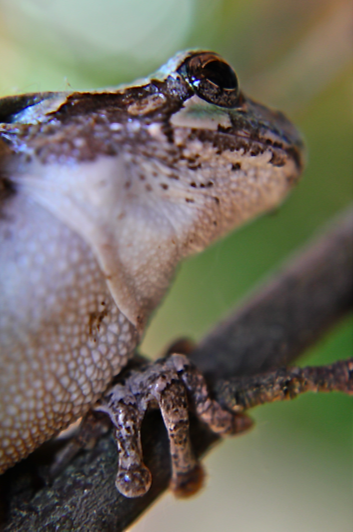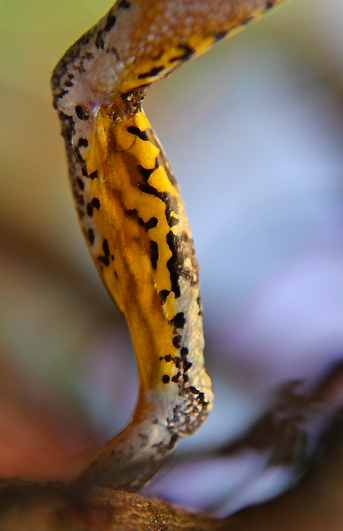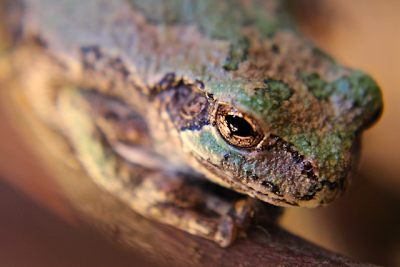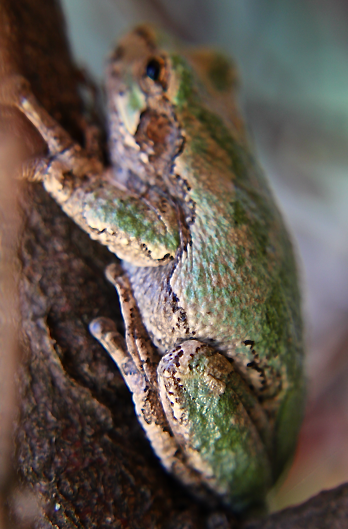Gordon Grice's Blog, page 65
February 15, 2012
The Nature of Edgar Allan Poe
A while back I posted my quick one-take reading of Poe'sclassic story of nature and super-nature, "Silence: A Fable." Thisnew version uses some high-tech audio to bring you a more polished listeningexperience. Read by James Addison Conrad; principle photography by ParkerGrice, with the addition of a few pieces from the Creative Commons (credited atthe end of the video).
Most people don't think of Edgar Allan Poe as a naturewriter, but he often was. His most famous piece, "The Raven," is about what Iconsider the central question of nature writing: how much of the world is inour perceptions, and how much objectively true? "Silence" considers anotheraspect of our relationship with nature. Or, maybe it's just some weird stuff involving hippos.
Published on February 15, 2012 07:32
February 14, 2012
Exotic Animal Documentaries
A while back I mentioned a couple of recent films about exotic animals in the US. I've now had a chance to see them. Both are very impressive.

The Elephant in the Living Room follows an officer whose job is to cope with escaped exotics. He tells about a colleague who died from the bite of his own venomous snake. The movie mentions many species, but its focus, despite the title, is mainly on a man who keeps lions. What impressed me most about the film is the compassion it shows for both main characters. It's clearly on the side of the officer, but the lion owner is treated with respect.
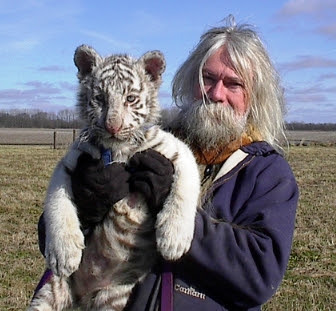
The Tiger Next Door is surprisingly similar. It, too, takes a largely sympathetic view of an exotic animal owner, even though the filmmakers clearly disagree with him. He raises tigers, and his story gives us the chance to hear several viewpoints about the responsibilities of humans to wild animals.
Trailers for both movies are in this earlier post.


The Elephant in the Living Room follows an officer whose job is to cope with escaped exotics. He tells about a colleague who died from the bite of his own venomous snake. The movie mentions many species, but its focus, despite the title, is mainly on a man who keeps lions. What impressed me most about the film is the compassion it shows for both main characters. It's clearly on the side of the officer, but the lion owner is treated with respect.

The Tiger Next Door is surprisingly similar. It, too, takes a largely sympathetic view of an exotic animal owner, even though the filmmakers clearly disagree with him. He raises tigers, and his story gives us the chance to hear several viewpoints about the responsibilities of humans to wild animals.
Trailers for both movies are in this earlier post.
Published on February 14, 2012 09:00
February 13, 2012
Sloth Bear Kills 2
 Shayamal/Creative Commons
Shayamal/Creative CommonsSloth bear kills 2 in MP, beaten to death - Indian Express:
"A sloth bear that killed two villagers and left a policeman fighting for his life was beaten to death by villagers in Venkatnagar village in Anuppur district on Saturday.
So violent was the animal's attack that Madanlal Yadav died on the spot in a field while Ravi Yadav who tried to rescue him died on way to hospital.
When constable Sudhir Singh went to the spot, barely a few hundred metres from the Chhattisgarh border, the animal attacked him as well before villagers rescued him.
Relatives and villagers then killed the animal out of fear and anger and unsuccessfully tried to set it afire."
Published on February 13, 2012 12:18
February 12, 2012
Man-Eating Leopards of Nepal
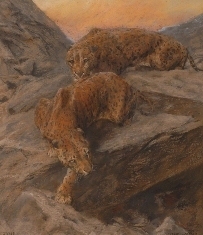
Man-Eating Leopard Stalks Village : Discovery News:
"A leopard dragged away and devoured a 14-year-old girl in western Nepal in what is thought to be the fifth deadly attack by the same animal in just two months, police said.
The youngster was cutting grass in the forest near her home in Baitadi district, on the border with India, when she was attacked by the animal, said Bishnu Bahadur Karki, a local deputy superintendent of police.
"The locals found the body torn into pieces and eaten below the neck at the forest area yesterday," he told AFP."
Published on February 12, 2012 08:30
February 11, 2012
Attack of the Roosters
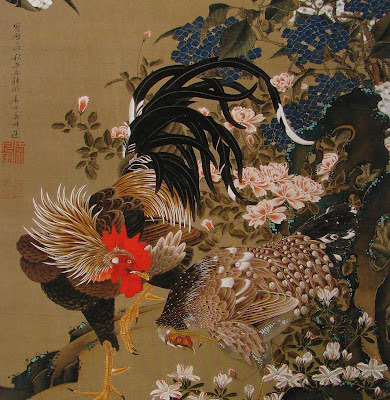
In Mississippi, roosters are attacking children. This is another of those items that could only be news in our modern, urbanized world. In all other times and places, the dangers of a rooster would seem obvious. Our grandparents would have solved this with a skillet.
Published on February 11, 2012 09:00
February 10, 2012
Tree Frog
Published on February 10, 2012 09:00
February 9, 2012
Whale Shark Washes Up
Published on February 09, 2012 09:00
February 8, 2012
Tigers Attack Tour Bus

At a wildlife park in China, tigers attacked a tour bus, puncturing tires and breaking the windshield. The predators weren't able to reach the people, so there were no serious injuries.
Published on February 08, 2012 09:00
February 7, 2012
New Discovery in Bee Collapse
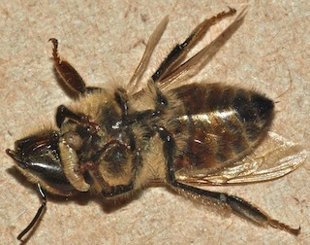 A maggot emerges from the body of a dead bee (between the head and the thorax)
A maggot emerges from the body of a dead bee (between the head and the thorax)Bee hives have been dying in droves the last few years. So far, scientists have suggested viruses, fungi, and mites as causes. A new discovery shows that parasitic flies have infected many hives in California. The flies somehow insert their eggs into the bee; the maggots that hatch from the eggs take over the bee's body, consuming it and leading it to self-destructive behavior.
"Zombie" Fly Parasite Killing Honeybees - Yahoo! News: "The parasitic fly lays eggs in a bee's abdomen. Several days later, the parasitized bee bumbles out of the hives often at night on a solo mission to nowhere. These bees often fly toward light and wind up unable to control their own bodies. After a bee dies, as many as 13 fly larvae crawl out from the bee's neck. "
Related Post: Maggots in a Carcass
Published on February 07, 2012 09:00
February 6, 2012
Bite of the Black Widow

There's an interesting mention of the Mediterranean black widow spider, or malmignatte, in Jean-Henri Fabre's 1913 classic Life of the Spider:
A few spiders are to be feared; and foremost among these is the Malmignatte, the terror of the Corsican peasantry. I have seen her settle in the furrows, lay out her web and rush boldly at insects larger than herself; I have admired her garb of black velvet speckled with carmine-red; above all, I have heard most disquieting stories told about her. Around Ajaccio and Bonifacio, her bite is reputed very dangerous, sometimes mortal. The countryman declares this for a fact and the doctor does not always dare deny it.
Of course the widows were soon proved venomous to everybody's satisfaction when Dr. Alan Blair experimented with a US species. Blair's triumph was also his sorrow. Here, from The Red Hourglass, is my account of his experiment:
*
Blair had been keeping widows in his laboratory for experiments on animals. (One of his experiments proved even the widow's eggs are toxic to mice.) He and his colleagues and assistants had collected the spiders from the wild; widows were plentiful around Tuscaloosa, Alabama. Blair captured Spider 111.33 in a rock pile near his own home on October 25, 1933. Like the other captive widows in Blair's laboratory, she was kept in a jar and provided with live insects. A water beetle became her last meal before the experiment. Then she went hungry for two weeks. Since earlier experimenters, like Baerg, had sometimes found it difficult to provoke a widow into biting, Blair wanted his spider hungry and irritable before he made any attempt to get bitten. (Incidentally, two weeks without food is a cakewalk for a widow. Other scientists working with a similar setup--many numbered widows in jars on shelves--once found that they had misplaced one widow at the back of a shelf for nine months. When they found her, she was still alive and eager to eat.)
On November 12, Spider 111.33 was, in Blair's words, "of moderate size, active and glossy black, with characteristic adult markings"--he means the red hourglass--"and appeared to be in excellent condition." Blair described himself as "aged 32, weighing 168 pounds...athletically inclined and in excellent health." A former college football player, Blair had just won the university's faculty tennis championship. He had monitored his body for a week and found his condition "normal." He had no particular sensitivity to mosquitoes or bees.
At ten forty-five in the morning, Blair used a small forceps to pick Spider 111.33 up by the abdomen and place her on his left hand. Without being prompted, she immediately bit him near the tip of his little finger, "twisting the cephalothorax from side to side as though to sink the claws of the chelicerae deeper into the flesh." The bite felt like a needle prick and a burn at the same time. Blair let the spider bite him for ten seconds, the burning growing more intense all the while. He removed the widow, putting it back into its jar unharmed.
A drop of "whitish fluid, slightly streaked with brown" beaded at the wound--venom laced with Blair's blood. The wound itself was so small that Blair couldn't see it even with a magnifying glass.
Blair's right hand was busy taking notes. Two minutes after the bite, he recorded a "bluish, pinpoint mark" where he had been bitten; the mark was surrounded by a disk of white skin. The finger was "burning." Soon the tip of the finger turned red, except for the pale area around the bite. The pain became "throbbing, lancinating."
Fifteen minutes after the bite, the pain had spread past the base of Blair's little finger. The side of his hand felt a bit numb. The area around the bite was sweating. The pain quickly traveled up his hand and arm, but it still was worst at the tip of his finger, which had swollen into a purple-red sausage.
At the twenty-two-minute mark, the vanguard of the pain had spread to Blair's chest, and the worst of it had progressed to his armpit, though the finger continued to throb. Noting the pain in the lymph node near his elbow, Blair deduced that the toxin had traveled through his lymphatic system.
Fifty minutes after the bite, Blair realized that the toxin was traveling in his blood. He felt "dull, drowsy, lethargic"; his blood pressure dropped; his pulse weakened; his breathing seemed deep. His white count began the steep climb it would continue throughout that day and night. His blood pressure and pulse continued to worsen.
Soon he felt flushed and had a headache and a pain in his upper belly. Malaise and pain in the neck muscles developed. Blair turned the note-taking duties over to his assistants. Shortly after noon, he noted that his legs felt "flushed, trembly" and his belly ached and was "tense." A rigid, pain-racked abdomen is a classic black widow symptom, as Blair knew from his study of other doctors' cases. He must have suspected he was about to experience pain much, much worse than he already felt. He asked to be taken to the hospital, which was three miles away. The ride took fifteen minutes, during which, as they say in politics, the situation deteriorated.
At half-past noon, Blair was at the hospital. His pulse was "weak and thready." His belly was rigid and racked with pain. His lower back ached. His chest hurt and felt "constricted." "Speech was difficult and jerky," he wrote later, adding in the detached tone obligatory for the medical journal in which he published his results, "respirations were rapid and labored, with a sharp brisk expiration accompanied by an audible grunt."
Blair's pains made it difficult for him to lie down for electrocardiograms--in fact, an assistant dutifully wrote down that he described it as "torture"--but he managed to lie still, and the EKGs proved normal. Hearing about the painful EKGs later, newspaper reporters wrongly assumed the venom had injured Blair's heart. That myth was repeated and embroidered in the press for decades, giving the widow's danger a spurious explanation easier for casual readers to grasp: heart attack.
Two hours after the bite, Blair lay on his side in fetal position. The pain had reached his legs. His "respirations were labored, with a gasping inspiration and a sharp, jerky expiration accompanied by an uncontrollable, loud, groaning grunt." He could not straighten his body, which was rigid and trembling; he certainly couldn't stand. His skin was pale and "ashy" and slick with clammy sweat. In short, he had fallen into deep shock. The bitten finger had turned blue.
Folk remedies reported from places as diverse as Madagascar and southern Europe involved the use of heat, and some doctors had reported hot baths and hot compresses helpful. William Baerg had attested the pain-relieving power of hot baths during his stay in the hospital. Blair decided to try this treatment on himself. As soon as his body was immersed, he felt an almost miraculous reduction of his pain, though it was still severe. His breath laboring, his forearms and hands jerking spastically, he allowed a nurse to take his blood pressure and pulse. His systolic pressure was 75; the diastolic pressure was too faint to determine with a cuff and stethoscope. His pulse remained weak and rapid--too rapid to count.
Forty-five minutes after Blair had arrived at the hospital, his colleague J. M. Forney arrived to take care of him. Forney found Blair lying in the bathtub, gasping for breath, his face contorted into the sweat-slick, heavy-lidded mask that has since come to be recognized as a typical symptom of widow bite. Blair said he felt dizzy. Forney later commented, "I do not recall having seen more abject pain manifested in any other medical or surgical condition."
After soaking for more than half an hour, Blair was removed from the bath, red as a boiled lobster. His breathing, like his pains, had improved as a result of the bath. Fifteen minutes later, both the ragged breathing and the pain were back at full force. Blair writhed in the hospital bed. Hot water bottles were packed against his back and belly, again reducing his pain. Perspiration poured from him, drenching his sheets. His blood pressure was 80 over 50. His pulse was a weak 120. He accepted an injection of morphine to help with the pain.
Blair continued to gulp down water. Sweat poured out of him and would for days, leaving him little moisture for producing urine. A red streak appeared on his left hand. He vomited and had diarrhea; he couldn't eat. In the evening of the first day, his blood pressure rebounded to 154 over 92; it stayed high for a week. His face swelled; his eyes were bloodshot and watery.
The night was terrible. He felt restless and could not sleep. The pain persisted. He had chills. A dose of barbiturates didn't help. He was in and out of hot baths all night. Sometime in that night the worst part came. Blair felt he couldn't endure any more pain. He said he was about to go insane; he was holding on only by an effort of his steadily weakening will. His caregivers injected him with morphine again.
The next day, his hands trembling, his arm broken out in a knobby rash, his breath stinking, his features distorted by swelling, Blair was still in pain, but he knew he was-getting better. In the evening, as he sat guzzling orange juice, sweat pouring from his body, his worst symptom was pain in the legs.
By the third day, Blair was able to sleep and eat a little. His boardlike abdomen had finally relaxed. He was beginning to look like himself again as his swollen face returned to its normal proportions. He went home that day. It took about a week for all the serious symptoms to vanish. After that, his body itched for two more weeks, and the skin on his hands and feet peeled as if burned.
Blair later returned to his native Saskatchewan, where he had an illustrious career in cancer treatment and research. When he died of heart trouble at age forty-seven, prime ministers and other public figures eulogized him. The story of his black widow experiment, which the wire service had named one of the top ten human interest stories of 1933, was retold in the papers at his death, and one more accretion of myth was added to the story when his heart trouble was falsely attributed to the bite of the black widow sixteen years before.
Blair's ordeal convinced the skeptics the widow's bite is toxic and potentially deadly. Thousands of cases of latrodectism, as widow poisoning is called, have been documented since then. The variation in symptoms from one person to the next is remarkable, making some cases hard to diagnose. The constant is pain, usually all over the body but concentrated in the belly, legs, and lower back. Often the soles of the feet hurt--one woman said she felt as if someone were ripping off her toenails or taking an iron to her feet.
Some doctors trying to diagnose an uncertain case ask, "Is this the worst pain you've ever felt?" A "yes" suggests a diagnosis of black widow bite. Several doctors have made remarks similar to Forney's, about the widow causing the worst human suffering they ever witnessed (though one ranked the widow's bite second to tetanus, which is sometimes a complication of widow bite). One of the questions Blair had in mind when he began his experiment was whether people acquire immunity over successive bites. He never answered this question because, as he frankly admitted, he was afraid of having another experience like his first.
Besides pain, several other symptoms appear regularly in widow victims, and Blair's suffering provided examples of most of them: a rigid abdomen, the "mask of latrodectism" (a distorted face caused by pain and involuntary contraction of muscles), intense sweating (the body's attempt to purge the toxin), nausea, vomiting, swelling. A multitude of other symptoms have occurred in widow bite cases, including convulsions, fainting, paralysis, and amnesia. Baerg and a number of other victims reported nightmares and sleep disturbances after the life-threatening phase of their reactions had passed.
Blair's fear for his sanity was not unusual either. Other patients have expressed similar fears, and some, like Baerg, have lapsed into delirium. Some have tried to kill themselves to stop the pain. (A few people have intentionally tried to get bitten as a method of suicide. It would be hard to imagine a method at once so uncertain and so painful.)
The venom contains a neurotoxin that accounts for the pain and the system-wide effects like roller-coaster blood pressure. But this chemical explanation only opens the door to deeper mysteries. A dose of the venom contains only a few molecules of the neurotoxin, which has a high molecular weight--in fact, the molecules are large enough to be seen under an ordinary microscope. How do these few molecules manage to affect the entire body of an animal weighing hundreds or even thousands of pounds? No one has explained the specific mechanism. It seems to involve a neural cascade, a series of reactions initiated by the toxin, but with the toxin not directly involved in any but the first steps of the process. The toxin somehow flips a switch that activates a self-torture mechanism.
Published on February 06, 2012 09:00

